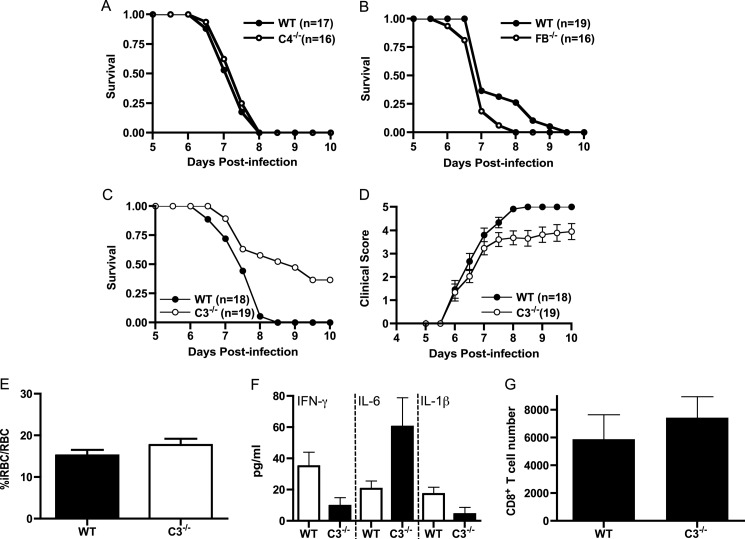FIGURE 1.
C4−/− and factor B−/− mice are fully susceptible to the development of ECM, whereas C3−/− mice are partially resistant. Wild type, C4−/−, factor B−/− (FB−/−), and C3−/− mice were injected intraperitoneally with 5 × 105 PbA-iRBC, and clinical scores and survival were monitored twice daily for 10 days as described under “Experimental Procedures.” A, C4−/− mice (n = 16) were fully susceptible to disease-induced mortality as compared with wild type mice (n = 17). B, factor B−/− mice (n = 16) were fully susceptible to disease-induced mortality as compared with wild type mice (n = 19). C, C3−/− mice (n = 19) are not significantly protected from disease-induced mortality (p = 0.21, log rank test) as compared with wild type mice (n = 18). D, clinical scores for wild type and C3−/− mice are significantly different from day 7.5 through day 10 (p < 0.05, Wilcoxon rank sum test). E, parasitemia on day 6 after infection was not significantly different between wild type and C3−/− mice (p > 0.05, Student's t test). F, INF-γ, IL-6, and IL-1 levels were determined by ELISA (n = 3–5 mice/group). G, brain tissue was isolated from PBS-perfused wild type and C3−/− mice at day 6 (n = 4/group) and subjected to flow cytometric analysis as described previously (43). The number of CD8+ T cells in the brains of wild type and C3−/− mice was not significantly different (p > 0.05, Student's t test).

